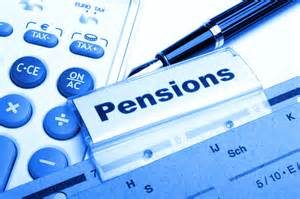John Lowe the Money Doctor asks when is it too early to think about retirement planning ? In this week’s part 2, John advises on various aspects of the pension you need to consider before deciding on the best route for your twilight years’ money requirements.
If you are thinking of setting up a pension plan, there are four main components that should be considered :
- The strength of the insurance company where the pension fund is based
- The performance of both that company and the specific fund or funds where the pension contributions are maintained – though the current 8 year Bull market is keeping a healthy glow on performances. With so much fund choice the vast majority of pension investors stick to the simple 5 fund managed fund structures that the leading insurance companies now offer ranging from cautious to high risk categories. It is important to have your own risk category determined – some just go with the Lifestyle option ..the younger you are the higher the risk, the older the more cautious the fund. It is so important to review performance annually.
One major aid for investment selection is ESMA – the European Securities and Markets Authority is a body that defines the risk category for every stock on its database and also controls the European Rating Platform (ERP) which provides access to free, up-to-date information on credit ratings and rating outlooks of all public companies. So for instance if there are 5 “lanes” of differing risk categories, each public company has been rated and categorised for the “lane” designated by ESMA. Generally the highest risk category would include emerging markets, technology and energy stocks, BRIC countries ( Brazil Russia India & China ) etc while the lowest would include cash funds and government bonds. So all you have to do is stick to your lane rather than individualise your stock selection.
3. The annual management charges associated with the pension fund by the insurance company
4. The commissions or fees payable to the intermediary / broker who sets up the pension plan.
For those self-employed, or owners, directors of companies, there are a number of hugely tax efficient schemes that can be availed of and will certainly whet the investment appetite. Called Small Self Administered Pension schemes (SSAPs), Self Directed Trusts or Self Invested Personal schemes (SIPs), they open up incredible options where pension funds can now be leveraged to borrow on a 30/70% basis, especially now that the banks are back lending again. In other words, 30% of your pension fund can be used to buy an investment (could be a property, commercial syndicate or non-property investment). The loan of 70% of that investment is funded by your annual pension contributions (tax free) and your rental income (also tax free) while there is no capital gains on the sale of the investment – as it is part of a pension – AND because it is in your trust, the proceeds will be passed on to your family after your death. With this system, you can invest far greater sums into your trust which can then be used to further borrow.
For example, take a married man aged 55 with no pension and earning € 100,000 annually, his company can invest up to a whopping € 187,440 for each of the next 10 years into his SSAP. That’s of course if the company is making sufficient profits !
Outside of the above complex pension options and the € 115,000 maximum salary that can be taken into consideration for pension contribution on a personal basis, there are two basic employee schemes – Defined Benefit (DB) and Defined Contribution (DC) schemes. DB schemes are where employees are supposed to receive on retirement one and a half times annual salary by way of a tax free lump sum AND in most cases 66% ( 50% in the public sector ) of their final year’s income irrespective of the performance of the fund over the period to which the employee or their employer or both has or has not been contributing. Providing of course that the full 40 years’ service has been completed or defined retirement age has been reached.
A Defined Contribution (DC) pension is available through a Company or a Group Pension arrangement. It is also the mechanism behind Personal Pension Plans, Personal Retirement Savings Accounts (PRSAs), Executive Pension Plans, Additional Voluntary Contributions (AVCs), Small Self Administered Pensions (SSAPs) and Self Invested Personal Pension Plans.
It works on the simple basis that the individual/company decides what percentage of salary will be contributed to the pension every year, hence the term Defined Contribution. There are no guarantees whatsoever as to what income the individual receives at retirement age. This income will be determined purely by the size of the accumulated fund on maturity or when you retire. It is subject to the vagaries of market conditions and costs associated with the fund. This is why rigorous annual reviews should be undertaken on all DC pensions to check the progress of your pension – has it grown since the previous year .. should you switch funds…should you make greater contributions ?
Contributors in both DB and DC schemes can supplement their pensions through an additional tax saving scheme called Additional Voluntary Contributions (AVCs) As I said earlier, there may not be enough money left in your DC fund to pay your monthly pension when you retire. Take steps now therefore – have a look at the age threshold above, have you room to start AVCs and importantly, can you afford it ? It is very tax efficient BUT you may have more pressing priorities. Whatever you do, don’t procrastinate. Remember the younger you start the better as this table shows :
Pension Maturity Values at National Retirement Age – 65:
| Age | Estimated maturity value at NRA | Providing a yearly pension of |
| 25 | €679,059 | €37,114 |
| 35 | €332,135 | €18,567 |
| 45 | €145,161 | €8,299 |
Finally, your financial adviser is a key person. There have been a significant number of changes over the last seven years in particular when the Central Bank of Ireland first took over the supervision and regulation of insurance brokers and investment intermediaries. #
When you meet an adviser for the first time, you should be given a Terms of Business. This will tell you what insurance and investment agencies the adviser maintains plus how the adviser earns their fees. Most firms are paid by the insurance companies. It is important therefore for you to know the difference between independent and tied agents.
Compliance now plays a huge part for all involved – the insurance company, intermediary and the consumer and while it may be “just paperwork” it is all designed to ensure probity, integrity and honesty. Sadly it has to be done.
Talk to an independent and professional financial adviser or email me for further information.

